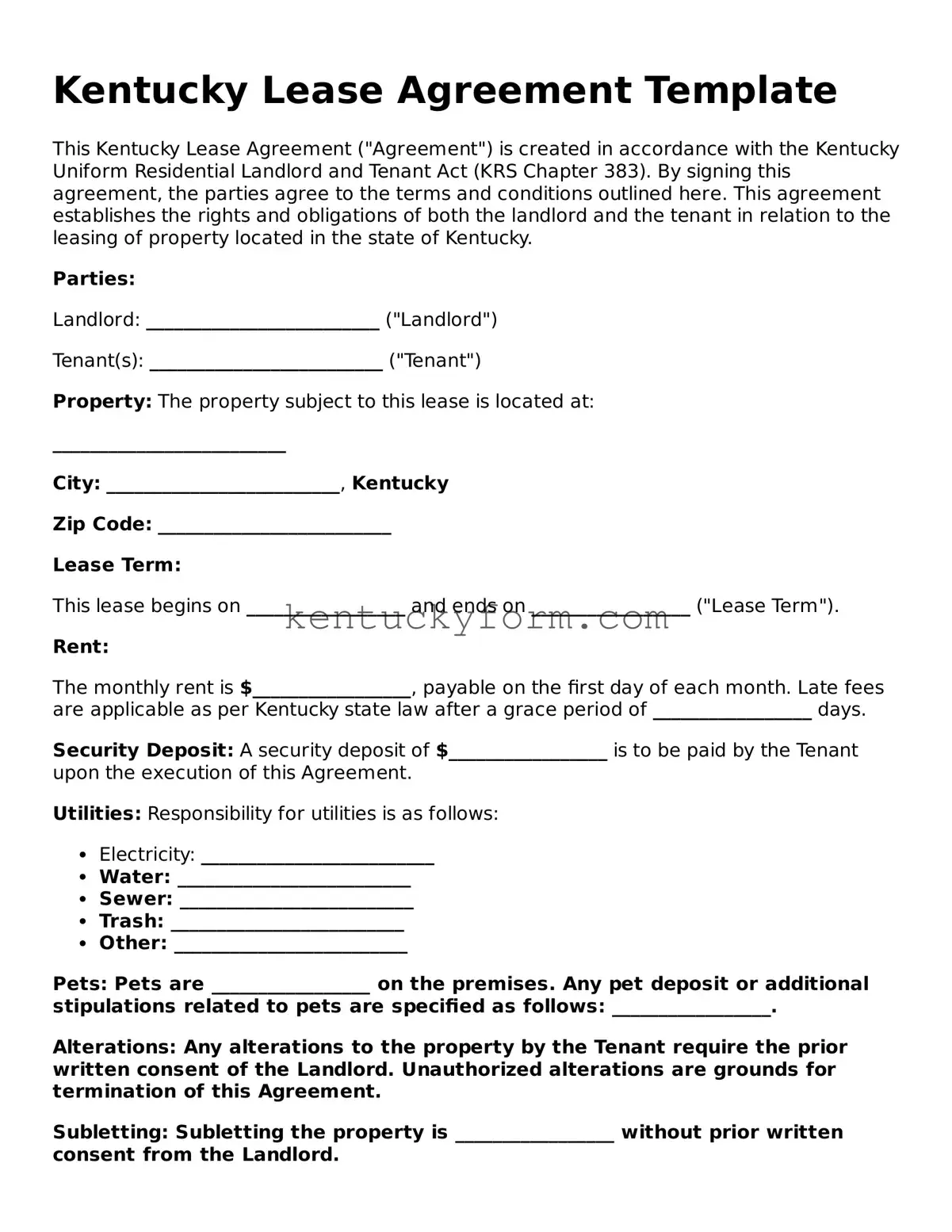Kentucky Lease Agreement Template
This Kentucky Lease Agreement ("Agreement") is created in accordance with the Kentucky Uniform Residential Landlord and Tenant Act (KRS Chapter 383). By signing this agreement, the parties agree to the terms and conditions outlined here. This agreement establishes the rights and obligations of both the landlord and the tenant in relation to the leasing of property located in the state of Kentucky.
Parties:
Landlord: _________________________ ("Landlord")
Tenant(s): _________________________ ("Tenant")
Property: The property subject to this lease is located at:
_________________________
City: _________________________, Kentucky
Zip Code: _________________________
Lease Term:
This lease begins on _________________ and ends on _________________ ("Lease Term").
Rent:
The monthly rent is $_________________, payable on the first day of each month. Late fees are applicable as per Kentucky state law after a grace period of _________________ days.
Security Deposit: A security deposit of $_________________ is to be paid by the Tenant upon the execution of this Agreement.
Utilities: Responsibility for utilities is as follows:
- Electricity: _________________________
- Water: _________________________
- Sewer: _________________________
- Trash: _________________________
- Other: _________________________
Pets: Pets are _________________ on the premises. Any pet deposit or additional stipulations related to pets are specified as follows: _________________.
Alterations: Any alterations to the property by the Tenant require the prior written consent of the Landlord. Unauthorized alterations are grounds for termination of this Agreement.
Subletting: Subletting the property is _________________ without prior written consent from the Landlord.
Maintenance and Repairs: The Tenant agrees to maintain the premises in good condition, reporting any needed repairs to the Landlord promptly. The Landlord is responsible for major repairs, except those caused by the negligence or intentional acts of the Tenant or their guests.
Governing Law: This Agreement shall be governed by and construed in accordance with the laws of the state of Kentucky. Any disputes or legal proceedings arising from this Agreement shall be resolved in the appropriate courts located in Kentucky.
Agreement Modification: Any changes to this agreement must be made in writing and signed by both the Landlord and Tenant.
Signatures:
By signing below, both the Landlord and Tenant agree to all the terms and conditions of this Kentucky Lease Agreement.
Landlord Signature: _________________________ Date: _________________
Tenant Signature(s): _________________________ Date: _________________
